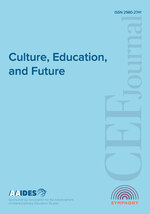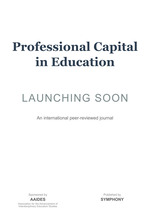Living our subjective presence: An interview with William F. Pinar
DOI:
https://doi.org/10.70116/3065457270Keywords:
Subjective presence, study, pedagogical praxis, currereAbstract
This paper is a narrative account of the conversation that took place at Pinar’s house, on April 4, 2023, focusing on a few themes that emerge from his 2023 book A Praxis of Presence in Curriculum Theory: Advancing Currere Against Cultural Crises in Education as well as the dialogue between us, including “subjective presence,” “study,” and “knowledge of most worth”. This paper hopes to experience Pinar’s calling not only in reverberating textual conversations but also in the author’s embodied lived experiences in the interview. This paper invokes several lived moments the author shared with Pinar and gives a glimpse of the person behind his text, in other words, to humanize the text. This would echo the humanist emphasis embedded in the reconceptualization of curriculum studies. This interwoven feeling, reading, thinking, and writing, I believe, are in itself a very pedagogical attempt to “concretize” the abstract and go beyond and behind the text. This article concludes with a discussion of the implications of embracing the subjective presence for teachers’ pedagogical praxis.
Downloads
References
Aoki, T. T. (1986/1991). Teaching as indwelling between two curriculum worlds. In W. F. Pinar & R. L. Irwin (Eds.), Curriculum in a new key: The collected works of Ted T. Aoki (2004, pp. 159–165). Lawrence Erlbaum Associates.
Aoki, T. T. (1993). Legitimating lived curriculum: Toward a curricular landscape of multiplicity. In W. F. Pinar & R. L. Irwin (Eds.), Curriculum in a new key: The collected works of Ted T. Aoki (2004, pp. 199–218). Lawrence Erlbaum Associates.
Greene, M. (1977). Toward wide-awakeness: An argument for the arts and humanities in education. The Humanities and the Curriculum, 79(1), 119-125.
Grumet, M. R. (1988). Bitter milk: Women and teaching. University of Massachusetts Press.
Huebner, D. E. (1999). The lure of the transcendent: Collected essays. Lawrence Erlbaum.
Miller, J. L. (1982). The breaking of attachments: Feminism and curriculum theory. The Journal of Curriculum Theorizing, 4(2), 10-20.
Miller, J. L. (2005). Sounds of silence breaking: Women, autobiography, curriculum. Peter Lang.
Pinar, W. F. (1975). The method of currere. Retrieved September 3, 2024 from https://eric.ed.gov/?id=ED104766
Pinar, W. F. (2004). What is curriculum theory? Lawrence Erlbaum Associates.
Pinar, W. F. (2009). The worldliness of a cosmopolitan education: Passionate lives in public service. Routledge.
Pinar, W. F. (2019). Moving images of eternity: George Grant's critique of time, teaching, and technology. University of Ottawa Press.
Pinar, W. F. (2023). A praxis of presence in curriculum theory: Advancing currere against cultural crises in education. Routledge.
Pinar, W. F., & Pautz, A. E. (1998). Construction scars: Autobiographical voice in biography. In C. Kridel (Ed.), Writing educational biography: Explorations in qualitative research (pp. 61–72). Routledge.
Rohdie, S. (1995). The passion of Pier Paolo Pasolini. Indiana University Press.
Strong-Wilson, T. (2008). Bringing memory forward: Storied remembrance in social justice education with teachers. Peter Lang.
Woolf, V. (1929). A room of one’s own. Hogarth Press.
Downloads
Published
How to Cite
Issue
Section
License
Copyright (c) 2025 Symphony

This work is licensed under a Creative Commons Attribution 4.0 International License.










